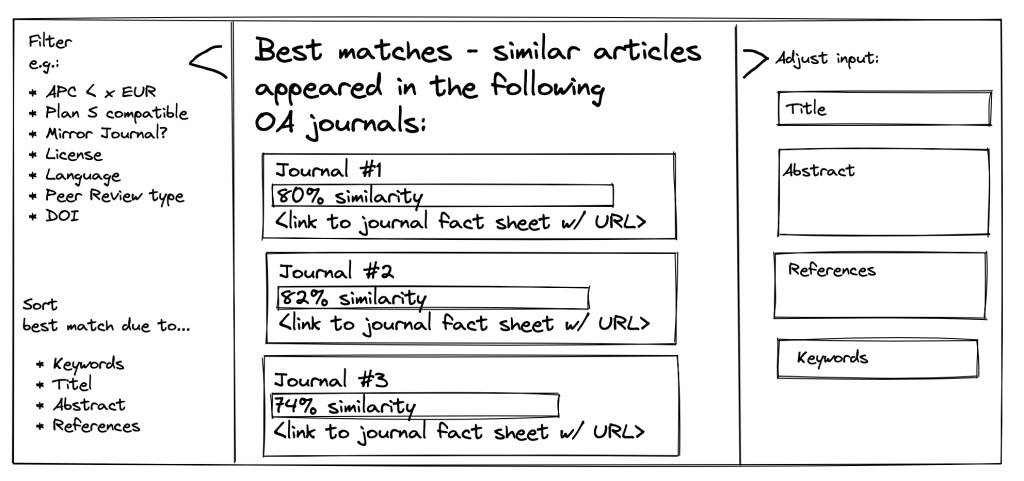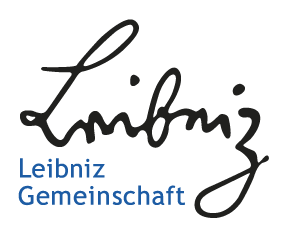Finding the right open-access journal with B!SON
More and more researchers require their results to be openly available (Kramer and Bosman, 2016). However, it can turn out complex and time-consuming to realize this simple premise: publishers offer a variety of payment models to secure their revenue after the subscription model is discontinued. Academic institutions and funders are making increasingly binding commitments to open access (see Sherpa Juliet) and also provide support measures. When it comes to the question „Where to publish?“ scientists are faced with complex decisions that lie outside their field of expertise. This is where our project B!SON comes in: We are developing a recommendation tool for researchers to identify a suitable open-access journal.
What’s the problem? So many journals, so many requirements
As a starting point, let’s imagine a researcher who is preparing an article. She wants to publish her article in open access and is looking for a suitable journal. She seeks answers to many individual questions, including:
- Among all the journals, how do I find those that recently published research in my field?
- Does the journal fulfill the requirements of my institution and/or funding organization – with regard to the licensing model or retaining my authors‘ rights, for example?
- How can I be sure I don’t fall for a predatory publisher?
- If the journal charges publishing fees: will my institution cover them?
In addition to researchers using B!SON as decision guidance, librarians offering publication support services can use B!SON in consultation with researchers.
How does B!SON help? Quality-checked open-access journals in which similar articles have been published
On the B!SON website, the scientist enters some components of her manuscript, e.g., title (or tentative title), abstract, and references. B!SON analyzes a database of open access articles and citation relationships and determines journals that have already published similar content and thus match the manuscript. Semantic and bibliometric methods are combined for this purpose.

Next, B!SON shows a list of journals ordered by relevance, as shown in Figure 2. The researcher can use this list as a decision aid. For each journal, she can access a fact sheet with detailed information. B!SON will likely also provide a comparison function (similar to product comparison tables in online shopping). The suggested journals can also be filtered by criteria relevant to the decision (i.e., license or possibly occurring fees).

(Note: The mockup designs are for illustrative purposes; the final user interface of the tool will most likely look different. They result from a workshop with librarians, open access professionals, and researchers as part of the requirements analysis).
How does B!SON work? Data matching from reliable, open sources
For the recommendations, B!SON uses an algorithm that compares the textual information of the manuscript entered by the researcher 1. with the corpus of all articles of the journals listed in the Directory of Open Access Journals (DOAJ) and 2. with the citation relationships recorded by OpenCitations.
- A machine learning-based calculation of the semantic similarity of the entered manuscript components with previously published OA articles. To this end, B!SON uses article metadata provided by DOAJ. DOAJ currently lists approximately 17,000 journals that are quality-assured by a panel of reviewers according to a set of criteria. To be listed in DOAJ, journals must, e.g., demonstrate peer review, regularly publish new articles, and use open-access compatible licenses. DOAJ records the article metadata for these journals – a total of 6,600,000 articles are currently accessible in JSON format via an open interface. For text comparison on this data basis, we opted for using Elasticsearch.
- A technical implementation of bibliometric algorithms, proven in library practice that determines bibliometric similarity. For this purpose, B!SON uses the COCI index and incorporates its approx. 1,200,000,000 DOI-to-DOI citation relationships into the calculation.
The result of this analysis is displayed in the form of a list of matching journals, presumably accompanied by a quantitative indication of similarity. The journal details (title, publisher, subject, license, APC, etc.) in the results list and the journal fact sheets will also be from DOAJ. We are currently considering including additional sources that check, for example, compliance with Plan S requirements.
Because the underlying data corpora are constantly changing, B!SON will regularly update the data sources and repeat the training process (approximately once per month). B!SON will be open source and provide an API to enable extended uses or local integration. For example, libraries can use B!SON to specify the journals for which they cover the APC.
Just another journal recommendation tool?
A journal recommendation tool is not a new idea per se (see, e.g., Bai et al., 2019). However, most previous approaches have a commercial background, use non-transparent recommendation algorithms, or recommend journals from only one (usually large) publisher. In contrast, we are developing B!SON in an evidence-based, publisher-agnostic, and open-source manner, using transparent algorithms for recommendations. B!SON does not collect any personal data. At the same time, we are considering the role of libraries as focal points for publishing within their institutions in its development. By using open metadata, B!SON builds upon – and at the same time contributes to – the ecosystem of open scholarly infrastructures.
Facts and figures about the B!SON project
The TIB works closely with SLUB Dresden in the B!SON project (an acronym for „Bibliometric and Semantic Open Access Recommender Network“). On the TIB side, members of the Visual Analytics research group and the Publication Services department are working together in the B!SON team. During the two-year term – from April 2021 to early 2023 – the project will receive financial support from the BMBF as part of its funding line for accelerating the transition towards open access (in German). We plan to provide a beta version of B!SON in spring 2022 and the final tool in spring 2023. In addition to our data-providing partners DOAJ and OpenCitations, the project is supported by many scientific institutions: We regularly consult researchers, open access professionals, and librarians for feedback and assistance, e.g., in disseminating our surveys. The B!SON community is, of course, open. If you wish to receive updates on the project or get involved in the testing phase, we’d love to hear from you at bison@tib.eu!
Note: This blogpost is a revised version of a talk held at Munin Conference of Scholarly Publishing 2021.
Cover image: Julian Kücklich, via Wikimedia Commons, licensed under CC0
... ist Mitarbeiterin im Bereich Publikationsdienste der TIB und dort im Projekt B!SON tätig.
... arbeitet als Software-Entwickler in der Forschungsgruppe Visual Analytics der TIB


0 Antworten auf “Finding the right open-access journal with B!SON”